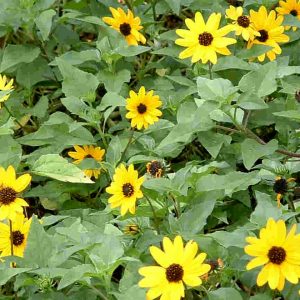Butterfly & Hummingbird Gardening
Butterfly and hummingbird gardening is always a great source of interest for our customers.
Planting a butterfly garden is a great way to add color to your garden as well as attract butterflies to your yard. As luck should have it, many butterfly plants are also magnets for hummingbirds and bees. An ideal garden will offer both nectar and host plants- nectar for adults and host plants provide shelter and camouflage for larvae. It is not essential to include both, but adults tend to be attracted to areas where there are both.

Examples of host plants:
For Monarch butterflies, they are very particular- only Milkweed is the host plant they will go to. Ideally the native Milkweed, however, if purchasing from Garden centers, make sure they have not been treated. Here at Verdego, we insist that ours not be sprayed. Important Fact: If you have milkweed in your garden, you MUST cut it back to the ground around Thanksgiving. By leaving a viable plant in your yard, the monarchs are not encouraged to migrate to Mexico, their native location.
Gulf Fritillary butterflies are also host specific and will lay their eggs on Passiflora or Passion Vine. The bonus of these plants is the larvae not only eat the plant, but when they emerge, the flowers provide nectar for them as well.
Other types of host plants include pea or bean family, citrus, magnolias, parsley, fennel and dill.
Examples of nectar plants:
Firebush, Gaillardia, Dune Sunflower, Salvia, Pentas, Cuphea Candy Corn, Shrimp Plant, Lantana varieties, Firecrackers, bottlebrush, Black Eyed Susan, Firespike, Pentas, plumbago, shrimp plants.
Firebush, Firecrackers, bottlebrush, salvia, citrus flowers, red passion vine, coral honeysuckle, shrimp plants are just some of the flowers that will attract hummingbirds.
Some common butterfly species include:
- Cloudless Sulphur Butterfly- these are smaller butterflies with the adults being a bright yellow, although females are sometimes white and a lighter yellow
- Zebra Longwing- Florida’s state butterfly. The butterfly is medium sized and sport distinctive black elongated wings striped with a bright yellow.
- Gulf Fritillary- a medium sized butterfly that is bright orange with elongated wings containing black marking.
- Black Swallowtail- A medium to large butterfly with wing spreads about 8.4 CM. The upper wings are black with yellow spots and the lower wings have iridescent blue markings. The front portion of the wings underside contain 2 rows of light yellow spots and the lower wing section has bright orange spots and a section of power blue.
Summer Color!
By now, if you haven’t already replaced them, your petunias and pansies that looked so great all winter and spring are succumbing to the heat. Your garden probably looks tired and uninspired! Plant some heat tolerant perennials and flowering shrubs and your flower garden will look happy again!

Vincas, zinnias, portulaca, purslane, pentas, dune sunflowers, salvias, lantanas, Mexican heather are some of the perennials that stand up to the sizzle!
Try adding in some great shrubby flowering plants to perk things up as well. Plumbago, firebush, hibiscus, thryallis, allamanda, jatropha, butterfly bushes, drift roses and knock out roses all will reward you with long lasting flower displays.
For beautiful tropical color add in copperleaf plants, crotons, Ti Plants, gingers, mandevillea, dipladenia, caladiums or birds of paradise. These will turn up the volume in any garden! Remember not to get too carried away with tropicals though as next January you may pay the price.
Keep your flowering plants happy by planting them in a mixture of potting soil and mushroom compost and fertilize with Nurserymen Bloomer 6-8-10 every two months to keep the flowers coming. Dead head your annuals and perennials periodically to keep the flowers coming.